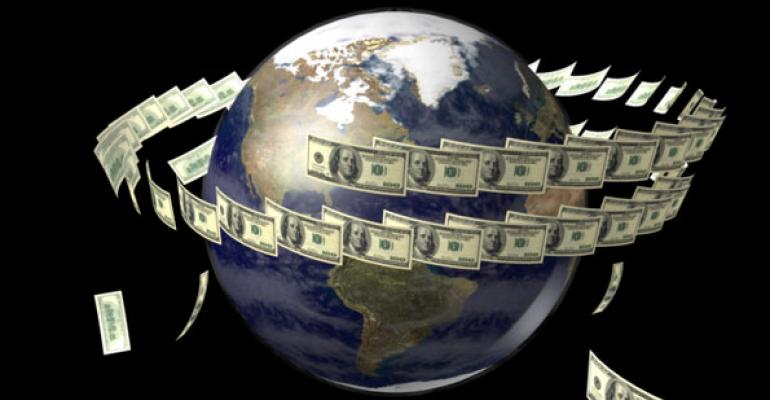For the first time in 16 years, the number of high-net-worth individuals (HNWIs) increased but the pool of wealth from HNWIs declined in 2011. The population of HNWIs was up 0.8 percent in 2011, while the pool of wealth was down 1.7 percent to $42 trillion, according to the World Wealth Report 2012, released today by Capgemini and RBC Wealth Management. Global wealth hasn’t declined since 2008, when it was down 19.5 percent.
The decline in global wealth was primarily driven by a loss of wealth for higher wealth brackets, said George Lewis, group head at RBC Wealth Management, during a press briefing Tuesday. Lewis said these ultra-high-net-worth individuals, with more than $5 million in investable assets, are more likely to hold less liquid securities and assets, such as private equity, hedge funds, and commercial real estate, which didn’t perform well in 2011.
That said, so called “millionaires next door,” the $1 million to $5 million segment, grew in both number of HNWIs (1.1 percent) and wealth (0.8 percent) globally. These investors represent 90 percent of all HNWIs.
Overall, regional growth rates varied in the report. In North America, in particular, the HNW population was down 1.1 percent, with wealth declining 2.3 percent in 2011. The U.S. and North America has the largest pool of wealth overall, so it should have a larger representation of UHNWI than other regions, Lewis said. So this likely had a more negative impact on wealth growth. North American growth was impacted by a slowdown in economic growth and equity market performance in 2011, he added.
Lewis pointed to other factors contributing to the changes in global markets in 2011, including the Eurozone sovereign debt crisis, natural disasters in Japan, Thailand and New Zealand affecting the supply chain, political unrest in Africa and the Middle East, and political uncertainty and dysfunction.
These factors caused investors to become more risk averse and flock instead to safe haven assets in 2011, such as fixed income or Treasuries, Lewis said. Others simply adopted a wait-and-see policy.
Because of this, “wealth management firms are facing a challenging and prolonged period of investor uncertainty and search for capital preservation versus growth, which challenges the profitability of many business models,” Lewis said.
Due to investors’ increasing risk aversion, equity markets across the globe declined in 2011, with overall market capitalization falling 18.7 percent from 2010. The sovereign debt crisis was a major factor in equity market reversals, Lewis said.
In addition, global GDP grew at a much slower rate in all regions, with the exception of sub-Saharan Africa. Global GDP was 2.7 percent in 2011, down from 4.1 percent in 2010. Capgemini and RBC expect continued market volatility in 2012 and even slower growth in global GDP. Global GDP is expected to slow to 2.2 percent this year, and grow marginally to 2.9 percent in 2013, given there are successful initiatives to control debt and spur growth, Lewis said.
Given the low level of interest rates, the prospect for wealth creation won’t be there unless investors take more risk in equities, which remain relatively attractive, in RBC’s view, or in certain elements of the fixed income market, such as corporate credit and emerging market fixed income, Lewis said.
“Individuals are going to need to move out the risk-return curve, in our view, before you see a meaningful pickup in high-net-worth individual wealth numbers, driven by the performance of financial assets.”



